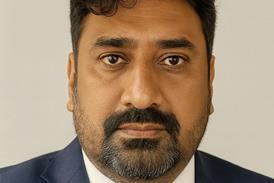Noel Conway, 67, has suffered from motor neurone disease for several years. He wishes to control the timing and manner of his death during the final stages of this disease by having assistance from a doctor – although he would carry out the final act of ending his life himself.
He argues that this right to autonomy and dignity is denied to him by section 2 of the Suicide Act 1961 as amended by the Coroners and Justice Act 2009. This, he argues, is an unlawful and disproportionate interference with his right to private life under article 8(1) of the European Convention on Human Rights, which includes his right to decide the manner and timing of his death. That article 8 is engaged was finally settled: see Pretty v United Kingdom (2002) 35 EHRR; R (Purdy) v Director of Public Prosecutions [2009] UKHL 54; R (Nicklinson) v Ministry of Justice [2004] UKSC 38; and Haas v Switzerland (2011) 53 EHRR 33: ‘The right of an individual to decide how and when to end his life, provided the said individual is in a position to make up his own mind in that respect and to take the appropriate action, is one aspect of the right to respect for private life within the meaning of article 8 of the convention.’
The debate has shifted and the battleground now is whether the interference with Mr Conway’s rights is justified under article 8(2).
In Conway, the defendant argued that section 2 is a proportionate measure for the protection of health, the protection of morals and the protection of rights of others. The court decided that the interference is justified for the protection of the weak and vulnerable, and that respect for the sanctity of life is also a relevant consideration. However, the defendant succeeded in pressing a third consideration upon the court, namely that section 2 is also intended to give assurance to patients regarding the ethical standards which medical practitioners will apply, thereby promoting trust between doctors and patients. There is no legal basis for importing this consideration and elevating it into a ground to justify an interference with article 8 rights. This is a new and unwarranted intervention by the court.
Mr Conway’s case for dealing with competing legitimate interests and protecting the weak and vulnerable was to set out a number of criteria to ensure that only those who are mentally competent should have the right to assistance to die – ie those who have made a clear, voluntarily settled and informed decision, and those who can undertake the final acts to bring about the death by their own hand (provided that they have a diagnosed terminal illness with a prognosis of six months or less to live). He also argued that an independent doctor must confirm that the criteria are met. He argued for an additional safeguard of authorisation by a High Court judge to provide further comfort to those who might be worried about a law change.
Not good enough. The court found that those who are vulnerable are not always easy to identify and, bizarrely, found that the intervention of a court would simply interpose an expensive and time-consuming forensic procedure without addressing the fundamental difficulty, namely ‘covert social pressure’.
The court went on to suggest that the High Court is not equipped to identify pressures which might lead to a patient asking for assistance with death. Why ever not? The judges ignore the fact that family judges and judges of the Court of Protection make these sorts of judgement on a daily basis in relation to the welfare of children and patients, including cases involving withdrawing life-sustaining treatment. This reasoning is disingenuous.
Other evidence which weighed heavily with the court was the fact that the issue of assisted dying for the terminally ill has been raised in debates in parliament. It is true there have been committee hearings and debates. But, more importantly, this ignores the quality of the ‘debates’ – the last one lasted four hours and, although there was much emotion aired, a ‘debate’ would be a generous description of the proceedings.
As to evidence of foreign jurisdictions, the court said that, since only five of the 47 members of the Council of Europe permit any form of assisted suicide, this too weighed heavily against making any change. This ignores the fact that each country has it own history and baggage on this issue and that we live in a country which is at the very forefront of innovation when it comes to human rights law. This goes to the question of historical and cultural differences and not much more.
The court also considered the positions of medical associations, the British Medical Association, the Royal College of General Practitioners, the Royal College of Physicians and the British Geriatric Society, none of which support assisted dying, the court said. The court relied on concerns that the weak and vulnerable will suffer and that the doctor-patient relationship will be fundamentally altered if the law is changed. There was no cross-examination on these claims – a surprising decision by Conway’s lawyers. The fallacy of these emotive arguments remains to be tested. When a Canadian judge explored these arguments in detail, the court found this concern to lack substance.
The court’s solution to Mr Conway’s dilemma is that if he wishes to die, including when he approaches a ‘locked in’ state, he could act upon that wish by asking, if necessary, by communication through eye-blinking for his non-invasive mechanical ventilation equipment to be removed – a right he has at common law. This must be very far from Mr Conway’s idea of a dignified ending over which he has control.
The court also considered the defendant’s submission that the proper approach to assisted dying provision is that it should be left for consideration by parliament alone (the substantive argument in the Nicklinson case). The court rejected this view, saying it did have jurisdiction.
Next is the case of Omid, who suffers from multiple systems atrophy, a progressive degenerative disease which shortens life. He is not arguing the narrow case put forward by Mr Conway. He argues that life to people like him with incurable conditions which are progressive and degenerative, facing years of a miserable, pointless existence which no palliative care can alleviate is intolerable; and he should be able to end his life painlessly and with dignity. There are similarities but also striking differences with Conway.
For one thing, parliament has not considered the question of this category of people, only those who are terminally ill. Second, he cannot resort to the withdrawal of nutrition and hydration. Third, a good deal of expert evidence will address the question of the effect of any law change on the weak and vulnerable, and the ‘slippery slope’. Omid is ready for the substantive debate and for a full airing of the evidence with examination and cross-examination of the defendant’s witnesses – something that did not happen in Conway.
That the weight of opinion from medical associations is against a law change is not surprising. The associations have to be cautious in circumstances where it is a criminal offence to help someone die. This opposition cannot be ignored but it is worth noting that every jurisdiction which has changed its laws has found enough doctors willing to participate in assisted dying schemes, so that those who do not wish to do so are not obliged to participate and thus avoid compromising their morals. We may recall that similar objections were in play in relation to abortion law change.
The stage is set for the next round of assisted dying litigation through the courts, if only the substantive arguments could be fully and properly tested with expert evidence and cross-examination of witnesses. Let anyone who has views and evidence intervene and present their evidence, so that the court can carry out a full and detailed proportionality review. Omid has nothing to fear from a comprehensive review of the evidence. But how will the government try to stop this happening?
Saimo Chahal QC (Hon) is a partner at Bindmans, which is representing Omid































1 Reader's comment